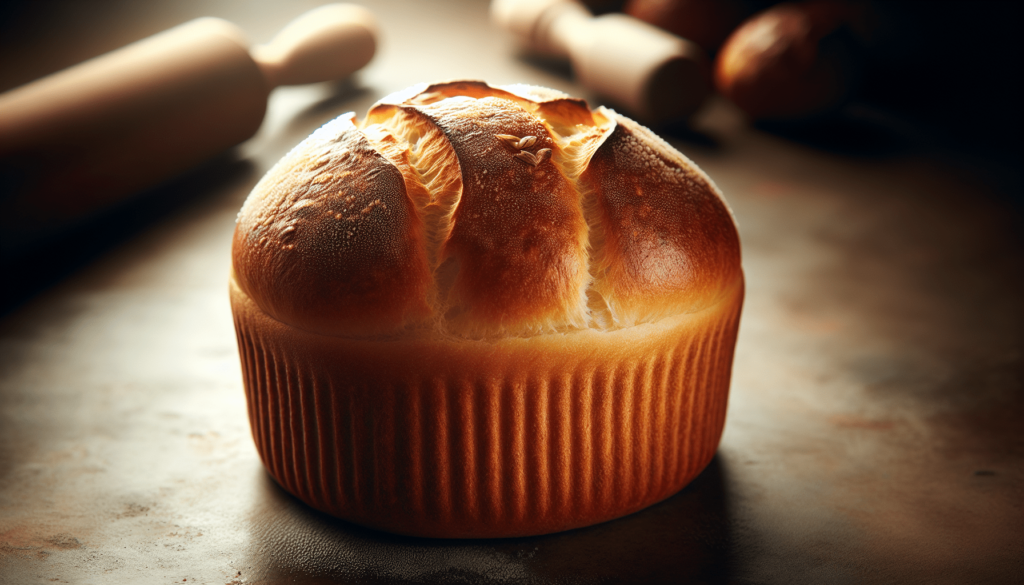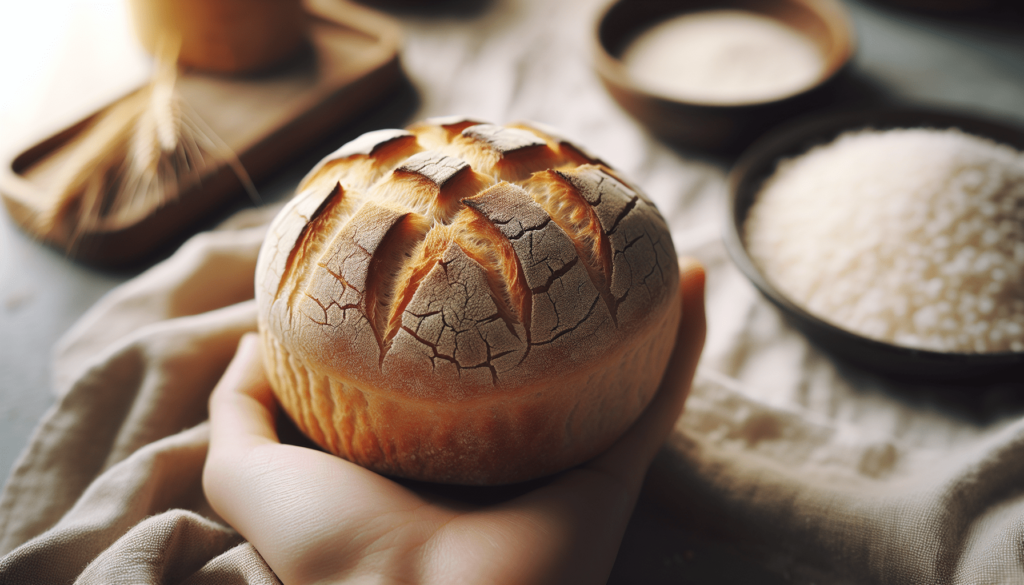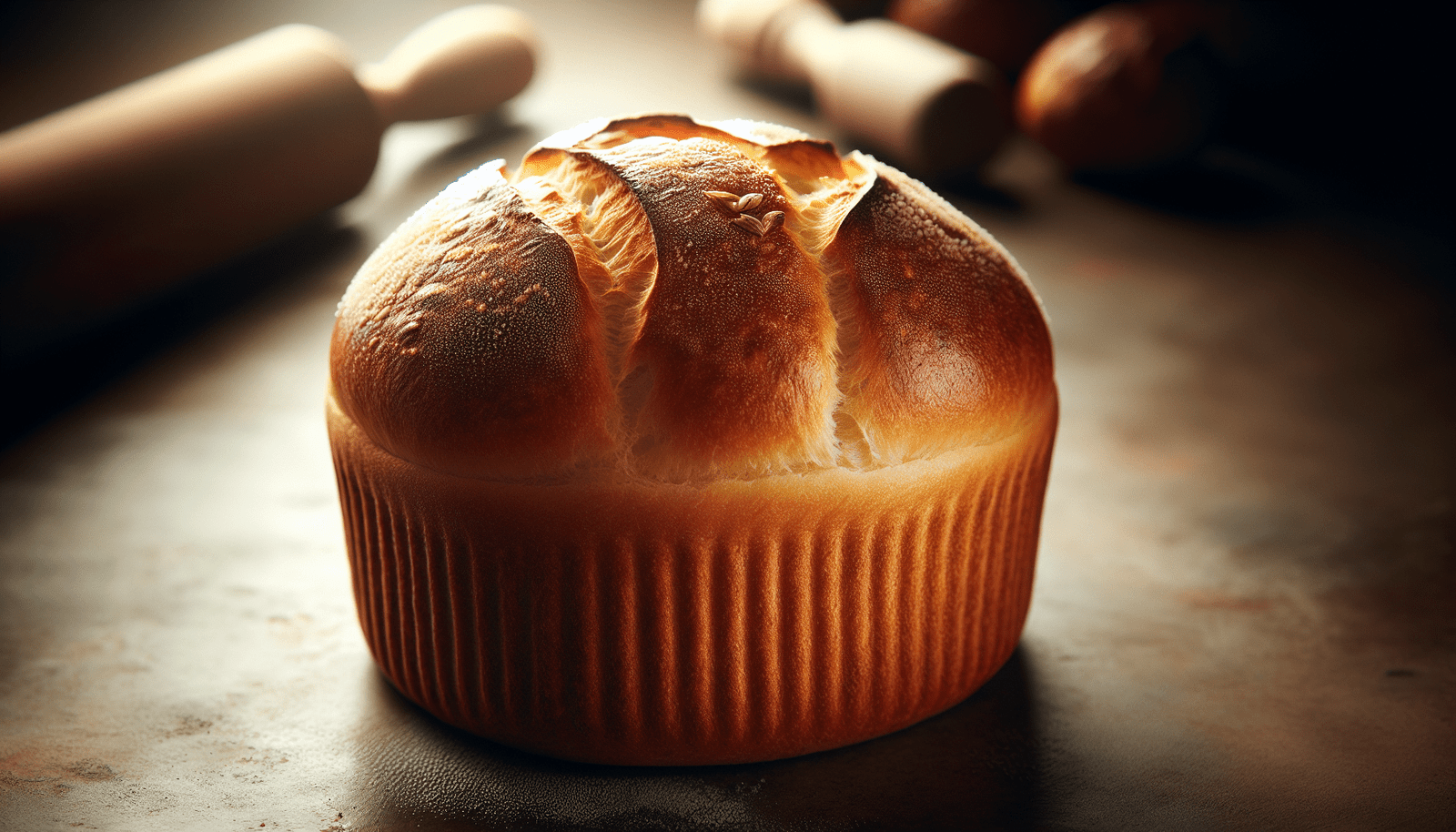Imagine the delightful aroma of freshly baked bread filling your kitchen. With this simple and easy-to-follow small loaf of bread recipe, you can now create your own delicious homemade bread. Whether you’re a seasoned baker or a beginner in the kitchen, this recipe is perfect for anyone looking to enjoy the satisfaction of baking their own bread. In just a few simple steps, you’ll be able to create a small loaf of bread that is soft, flavorful, and perfect for sandwiches or toast. So roll up your sleeves, grab your ingredients, and get ready to embark on a baking adventure that will leave you with a delectable loaf of bread that is sure to impress everyone around you.

Ingredients
To make a small loaf of bread, you will need the following ingredients:
Flour
The main ingredient in bread is flour. You can use either all-purpose flour or bread flour for this recipe.
Yeast
Yeast is what gives bread its rise and fluffy texture. Make sure to use active dry yeast or instant yeast for the best results.
Salt
Salt enhances the flavor of the bread and also helps to control the yeast’s activity.
Water
Water is crucial to hydrate the dough and activate the yeast. It is important to use warm water, around 110°F, to activate the yeast properly.
Sugar
A small amount of sugar helps to feed the yeast, helping it to activate and produce carbon dioxide, which makes the bread rise.
Oil
Adding a little oil to the dough helps to keep the bread moist and tender.
Equipment
Before you begin, gather the necessary equipment:
Mixing bowl
A large mixing bowl is necessary to combine all the ingredients and knead the dough.
Measuring cups and spoons
Accurate measurements are essential when it comes to baking. Make sure to have measuring cups and spoons on hand to measure out the ingredients correctly.
Whisk
A whisk will come in handy to mix the dry ingredients together.
Loaf pan
To shape the dough, you will need a loaf pan. It is best to use a small loaf pan for this recipe.
Oven
Finally, a functioning oven is necessary to bake the bread to perfection.
Preparation
Before you start mixing the ingredients, there are a few preparation steps you need to follow:
Activate yeast
To activate the yeast, dissolve it in warm water and let it sit for about 5-10 minutes until it becomes foamy. This step ensures that the yeast is alive and active.
Mix dry ingredients
In a large mixing bowl, whisk together the flour, salt, and sugar until well combined. This step ensures that all the dry ingredients are evenly distributed throughout the dough.
Add wet ingredients
Make a well in the center of the dry ingredients and pour in the activated yeast mixture and oil. Stir the mixture until the wet and dry ingredients are well combined.
Knead the dough
Transfer the dough onto a lightly floured surface and start kneading. Stretch and fold the dough for about 10 minutes until it becomes smooth and elastic. This step develops the gluten in the dough, giving the bread structure and texture.
Let the dough rise
Place the kneaded dough into a greased bowl, cover it with a clean cloth, and let it rise in a warm place for about 1-2 hours or until it has doubled in size. This step allows the yeast to ferment and create air bubbles, making the bread light and fluffy.
Shaping and Proofing
Once the dough has risen, it’s time to shape and proof the bread before baking it:
Shape the dough
Transfer the risen dough onto a lightly floured surface. Gently press the dough down to release any air bubbles. Then, shape it into a loaf shape by folding the sides in and rolling it tightly. Pinch the seams closed to ensure the loaf maintains its shape.
Place in loaf pan
Grease the loaf pan with oil or butter and carefully transfer the shaped dough into the pan.
Let it proof
Cover the loaf pan with a clean cloth and let it proof for another 30-60 minutes or until the dough has risen to the top of the pan. This step allows the bread to undergo a second rise, further enhancing its flavor and texture.

Baking
Now comes the most exciting part – baking the bread to golden perfection:
Preheat the oven
Preheat your oven to 375°F (190°C) while the dough is proofing. It is important to preheat the oven to ensure even baking.
Bake the bread
Once the dough has proofed, place the loaf pan in the preheated oven and bake for about 25-30 minutes or until the top is golden brown and the bread sounds hollow when tapped. The exact baking time may vary depending on your oven, so keep a close eye on it.
Cooling and Storing
After your bread is beautifully baked, it’s time to cool it down and store it properly:
Remove from pan
Once the bread is baked, carefully remove it from the oven. Use oven mitts or a towel to protect your hands, as the loaf pan will be hot.
Cool on wire rack
Transfer the bread onto a wire rack to cool completely. Cooling on a wire rack ensures that the bread cools evenly and moisture doesn’t accumulate on the bottom, resulting in soggy bread.
Store in an airtight container
Once the bread has cooled down, store it in an airtight container to keep it fresh. This will help to preserve the bread’s moisture and prevent it from becoming stale.
Tips and Tricks
Here are some helpful tips and tricks to make your small loaf of bread turn out even better:
Use warm water to activate yeast
Make sure the water you use to activate the yeast is warm, around 110°F. If the water is too hot, it can kill the yeast, while water that’s too cold won’t activate it properly.
Knead until dough is smooth and elastic
Kneading the dough for the right amount of time is crucial. Keep kneading until the dough becomes smooth and elastic. This ensures proper gluten development, resulting in a soft and tender bread.
Let the dough rise in a warm place
Yeast thrives in warmth, so it’s important to let the dough rise in a warm place. You can place the covered dough in a lightly warmed oven or near a window where sunlight shines through.
Variation
If you want to switch things up and try different flavors, here are some variations you can experiment with:
Whole wheat bread
Replace a portion or all of the all-purpose flour with whole wheat flour for a healthier and heartier bread. Whole wheat bread has a nuttier flavor and is rich in fiber.
Cheese bread
Add your favorite cheese, such as cheddar or Parmesan, to the dough before shaping it. The melted cheese adds a savory, gooey dimension to the bread.
Garlic bread
Mix in some minced garlic and dried herbs, such as oregano or basil, into the dough for a flavorful garlic bread. This variation is perfect for accompanying pasta dishes or as an appetizer.
Serving Suggestions
Once your homemade small loaf of bread is ready, here are some serving suggestions to enjoy it:
Toast slices and spread with butter
Slice the bread and pop it in the toaster or under the broiler until lightly golden. Spread some creamy butter on top for a simple and satisfying treat.
Make sandwiches
Use your homemade bread to make delicious sandwiches. Fill it with your favorite ingredients like deli meats, cheese, and fresh vegetables for a tasty lunch or snack.
Dip in olive oil and balsamic vinegar
Cut the bread into bite-sized pieces and serve it with a side of olive oil and balsamic vinegar for dipping. This makes a delightful appetizer or a light evening snack.
Conclusion
Congratulations! You have successfully made your homemade small loaf of bread. Enjoy the satisfaction of creating something delicious from scratch and feel free to experiment with different flavors and ingredients in the future. Whether you choose to make whole wheat bread, cheesy bread, or garlic bread, let your creativity shine in the kitchen. Happy baking!

